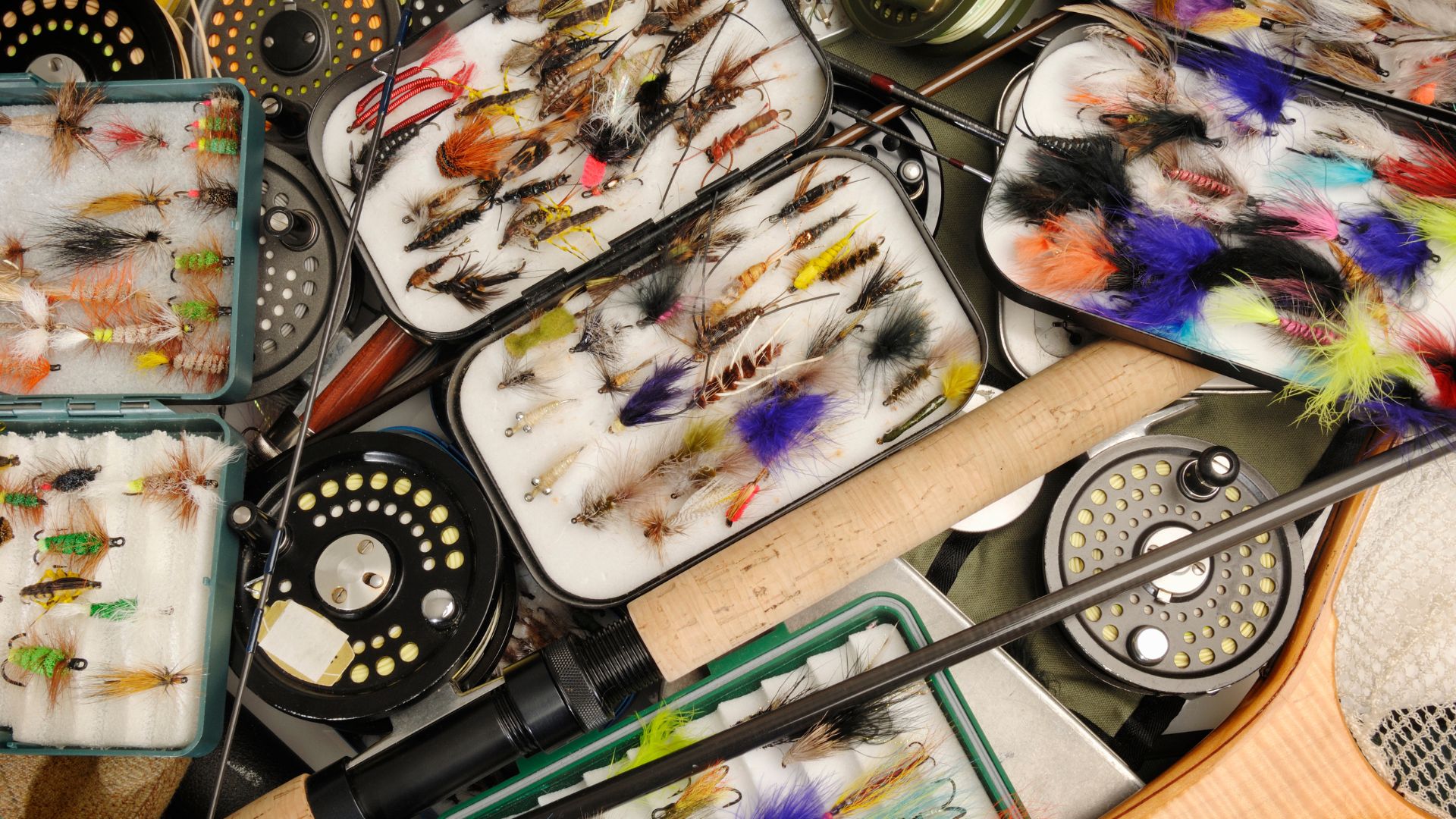A Beginner’s Guide to Fly Fishing Equipment


Beginners looking to start fishing will benefit from having a pack that holds their rod, reel, fly line, and several flies in it. One such pack is the Cliff Super Day’s Worth which features both protective case and fly box features built into it.
Fly lines come in various weights to fit with various rods. There are also different taper options for various uses.
Fly Rod
Fly rods come in various lengths and line weights, but the key element to keep in mind when selecting one for fishing is matching its size with that of your intended catch. A light rod with light line is ideal for trout and panfish fishing; heavy rods with heavier lines allow casting larger flies for bass, salmon, pike, musky or any other freshwater species.
Modern rods are often made from fiberglass, graphite or composite materials with cork or hypalon grips for improved comfort. Their actions, flex capabilities and sensitivity levels vary accordingly.
Fly Reel
Fly reels may seem like simple pieces of equipment that simply hold line, but when faced with fighting large fish they become essential pieces of gear. Durability must be balanced against smooth operation to prevent sudden spikes in resistance which could break leaders or light tippets.
Early click drag models feature a spring-loaded metal pawl arm which locks into small teeth on the interior of the spool like a ratchet, creating an audible click when pressure is applied to it. Modern disc drags are more versatile and allow greater adjustability; however, regular disassembly and cleaning must take place to keep them smooth.
Fly Line
Fly lines come in all kinds of designs, materials and tapers to suit different fishing techniques and fly patterns. Newcomers to fly fishing may start off with a standard Weight Forward floating line to cast everything from dry flies and nymphs through to streamers.
Tapers of fly lines refer to the shape and weighting of its front section. Long, gradual taper lengths present flies delicately while aiding casting; shorter heavier taper lengths permit more power with greater distance casting capability.
Full sink fly lines are game changers for anglers who fish deeper waters where elusive species reside. These lines submerge directly through the water column to reach depths not possible with other forms of fly lines.
Flies
Fly fishing combines art, science and athleticism. Flies used in fly fishing are designed to mimic insects or natural prey that attract the species of fish an angler is targeting.
An ideal fly fishing vest or hip or sling pack enables you to keep all the essential items, like flies, leaders and tippet material, strike indicators and nippers organized and within reach when out on the water.
Split shot are small metal weights used in fly fishing rigs to add depth and speed, such as in nymph and dry-dropper configurations. A nail knot tool is also an essential addition.
Leaders
Leaders provide a thin yet clear connection between your fly line and its target fly. By transmitting energy from your cast directly to its target fly, leaders help transfer energy for increased turnover and presentation of that fly.
Leader materials range from nylon and fluorocarbon, with many options in between for situations like nymphing and dry fly fishing.
Leaders typically taper from thick at their butt sections where they attach to your fly line to smaller diameters in their mid section and tippet, gradually tapering off. Some leaders are designed with stiffness specific for certain conditions or fisheries in mind while there are even specialty wire leaders designed for toothy species like sharks or barracuda.
Tippet
Tipets connect fly lines and flies together and are essential in delicate presentations without startling fish. Tipets may be made of monofilament, fluorocarbon or copolymer materials.
Tippet material comes in various diameters and flexibilities, so having a selection of tippets available to choose from based on conditions and type of fly you are fishing is always beneficial.
Some anglers use tippet material from a spool to build their leader, while others add it to an already established leader or use dropper flies in nymph rigs. Tippet material can also be used to repair tapered leaders cut off while changing flies or damaged by fish or snags.
